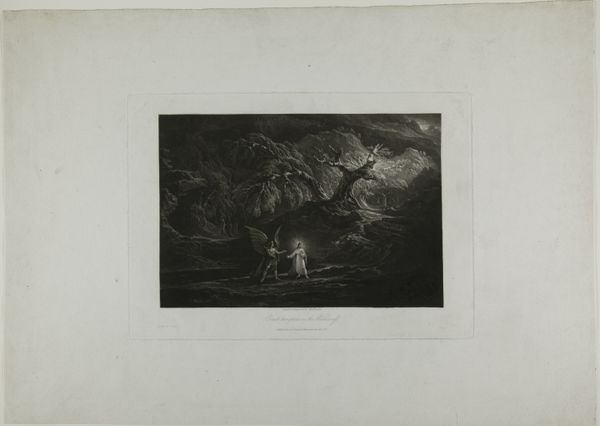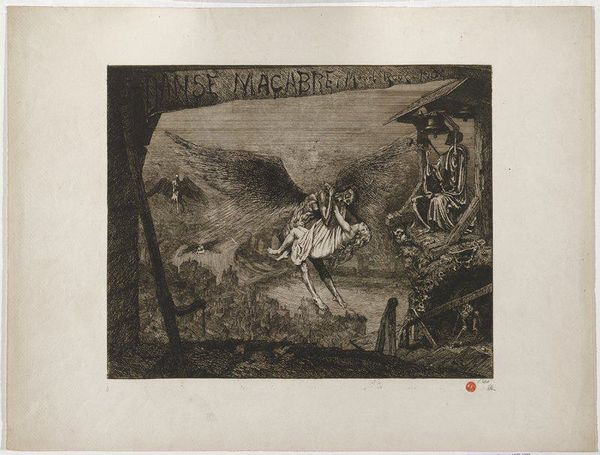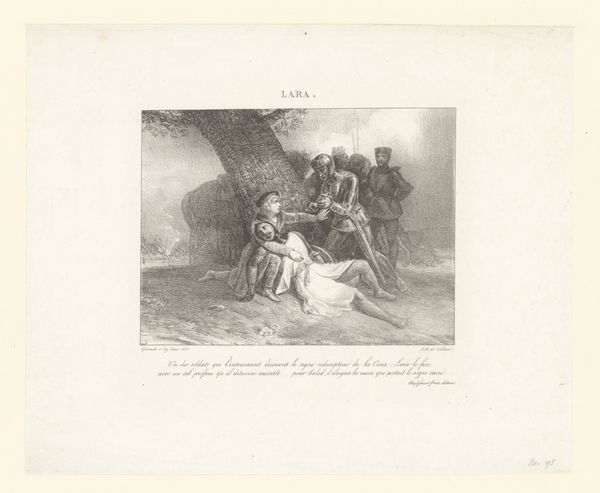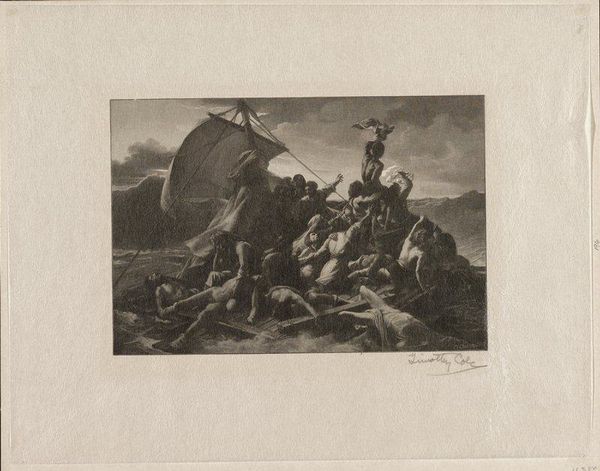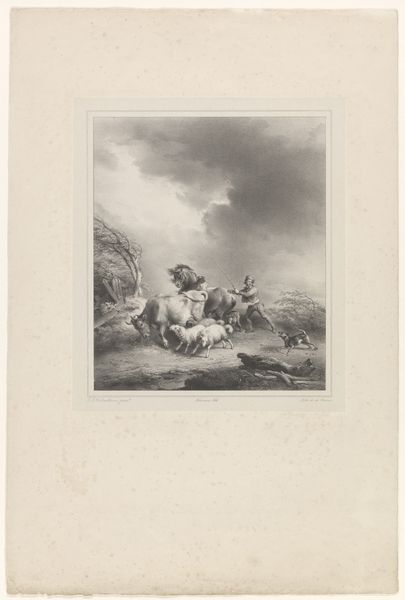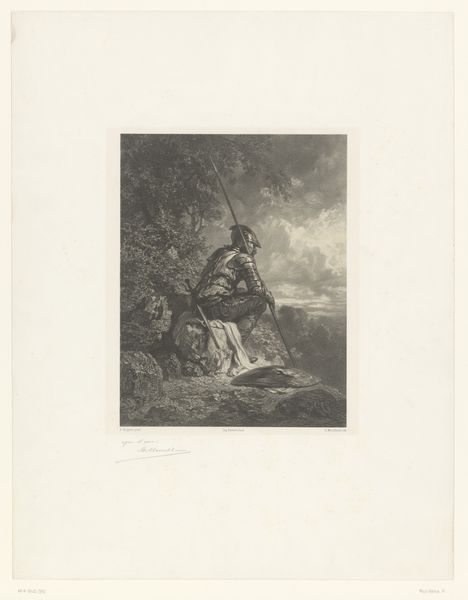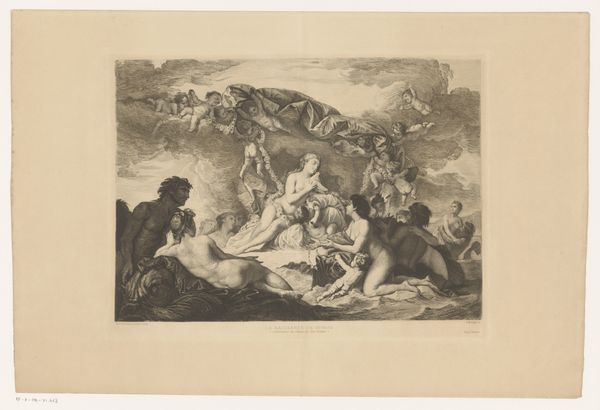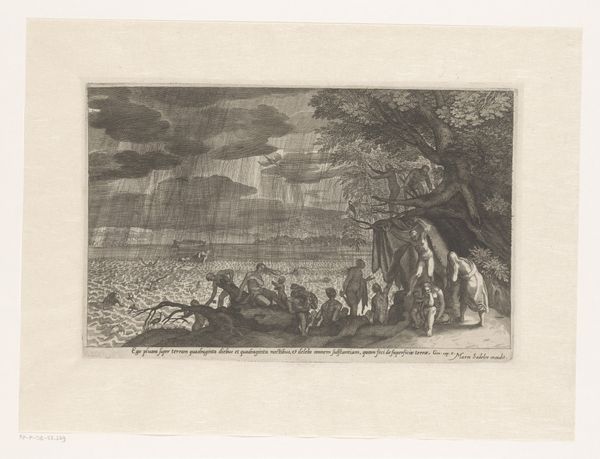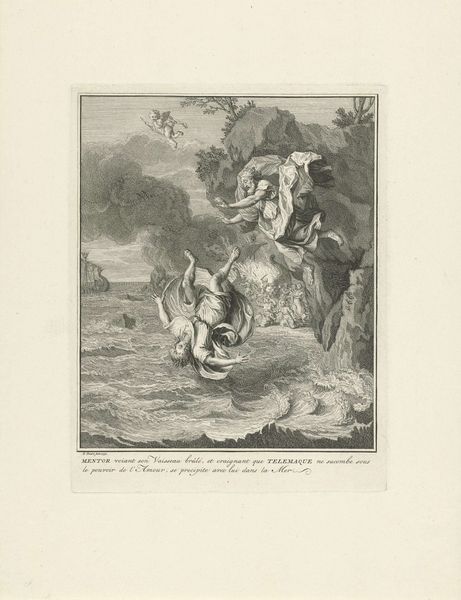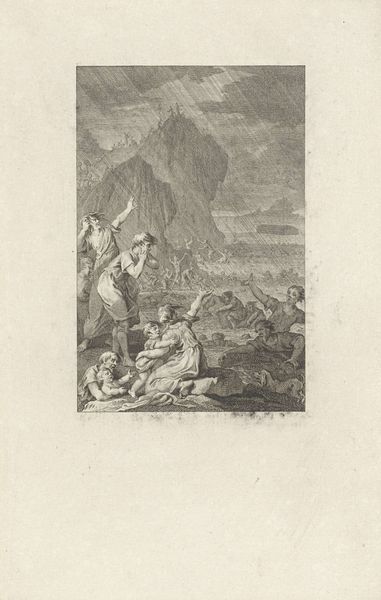
Dimensions: height 211 mm, width 267 mm
Copyright: Rijks Museum: Open Domain
Editor: Here we have "De Cimbrische vloed, 113 v.Chr.," an etching by Johann Wilhelm (I) Kaiser, dating from sometime between 1840 and 1880. The scene is incredibly dramatic, with people struggling against what seems like a powerful flood. What stands out to you about this piece? Curator: What I find particularly compelling about this image is how it speaks to anxieties around natural disasters and collective identity in 19th-century Europe. Remember, this was a time of massive social upheaval and nascent nationalism. How does Kaiser choose to depict this historical catastrophe? Are these people shown as individual figures, or as a unified group? Editor: I see both. There's individual suffering in their faces, but they're also clinging to each other, a huddle against the storm. Curator: Exactly! And this huddling becomes symbolic. The Cimbrian flood was a real event, a defeat. But Kaiser reframes it through a Romantic lens. He's tapping into a narrative of shared struggle to perhaps encourage a sense of shared destiny. Consider the implications of representing a national identity as forged in adversity, as defined by overcoming environmental challenges. Who is included, and excluded, from this story of collective survival? Editor: So, it’s not just about the flood itself, but about using a historical event to build a particular kind of national story. Curator: Precisely. And that's why even seemingly straightforward historical paintings can be powerful statements about identity, belonging, and power dynamics in the present. Who controls the narrative controls the meaning. Editor: That gives me a completely different way of looking at historical art. Thanks! Curator: My pleasure. Hopefully this offers a useful tool to interpret visual culture as a whole.
Comments
No comments
Be the first to comment and join the conversation on the ultimate creative platform.
